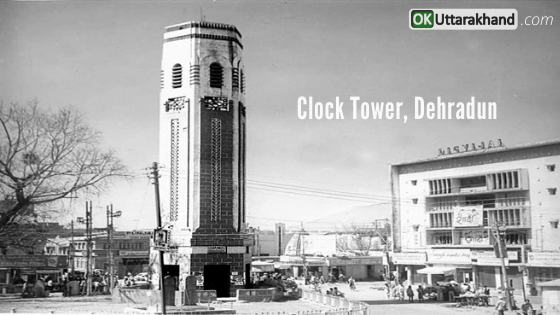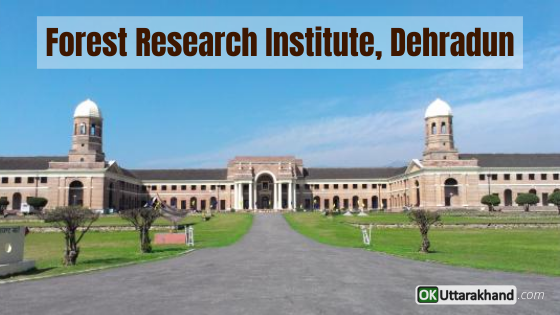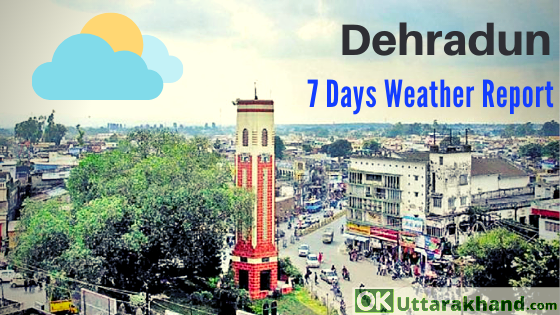Dehradun is the capital of Uttarakhand, a hilly state in India. Dehradun district is Located in the Garhwal region. Dehra Dun city comes under Doon Valley on the foothills of the Himalayas nestled between the river Ganges on the east and the river Yamuna on the west. The city is famous for its natural beauty and slightly milder climate and provides a gateway to the surrounding region.
Dehradun district is well connected and in proximity to Himalayan tourist destinations such as Mussoorie, and Auli and the Hindu holy cities of Haridwar and Rishikesh along with the Himalayan pilgrimage circuit of Chota Char Dham.
Here we will discuss weather, travel, education, distance, route map and places to visit in Dehradun. In this article, we will try to cover every basic information about Dehradun district.
Dehradun at a Glance
| Founded | 1676 |
| Other Name | Deradoon, Dronanagari, Dehradoon, Doon Valley |
| District Magistrate | Dr. Ashish Kumar Srivastava |
| Mayor | Sunil Uniyal “Gama” (BJP) |
| Municipal Commissioner | Vinay Shankar Pandey (IAS) |
| District Headquarter | Dehradun |
| Tehsils | 7 |
| Area | 3088 sq km |
| Population (2011) | 16,96,694 (17 Lakhs) |
| Vehicle Registration | UK-07 |
| STD Code | 0135 |
| Pin Code | 248001 |
| Official Website | https://dehradun.nic.in/ |
History of Dehradun District
According to Skanda Purana, Dehradun formed part of the region called Kedar Khand. It was included in the kingdom of Ashoka by the end of the 3rd century B.C. It is revealed by history that for centuries the region formed part of the Garhwal kingdom with some interruption from Rohillas.
It is a true story that Dehradun got his name in 1676.
The name “Dehradun” derives from the historical fact that Ram Rai (the eldest son of the Seventh Sikh Guru Har Rai) set up his “Dera” (camp) in “dun” (valley) in 1676. After that his followers and local people called this place ‘Dera Dun’ later on became Dehradun.
Another derivation of the term dun is stated to be from Dronashram, the hermitage of Guru Dronacharya of Mahabharata fame, who sojourned for a season in the village of Devara, situated near to Dehra to perform his devotions at a lonely spot. that is why Dehradun is also known as Drona-Nagari.
Formation of Dehradun District

For about two decades till 1815, it was under the occupation of the Gorkhas. In April 1815 Gorkhas were ousted from the Garhwal region and Garhwal was annexed by the British. In that year the area now comprising tehsil Dehra Dun was added to district Saharanpur.
- In 1825, however, it was transferred to the Kumaon Division.
- In 1828, Dehra Dun and Jaunsar Bhabar were placed under the charge of a separate Deputy Commissioner and in 1829, the Dehra Dun district was transferred from the Kumaon Division to the Meerut Division.
- In 1842, Dehradun was attached to the Saharanpur district and placed under an officer subordinate to the Collector of the district.
- But since 1871 it is being administered as a separate district.
- In 1968 the district was taken out from Meerut division and included in the Garhwal Division.
After the formation of the state of Uttarakhand, Dehradun became the interim capital of the state.
In 2020, Uttarakhand has two capitals, winter capital is Dehradun and Gairsain is the summer capital of the state.
Dehradun Population & Demographics
This district is divided into two major parts: the main city Dehradun surrounded by Shivalik and the Jaunsar-Bawar, which is in the foothills of Himalayas.
- In the north and northwest: it borders on the district of Uttarkashi and Tehri Garhwal.
- In the east and southeast: by Pauri Garhwal and Ganges river.
- In the west: it is bordered by Shimla and Sirmaur districts of Himachal Pradesh, Yamunanagar district of Haryana and the Tons and Yamuna rivers.
- To the south: are Haridwar and Uttar Pradesh’s Saharanpur district.
We have collected some important data and figures about Dehradun. If you are curious to know some interesting facts like what is the population of Dehradun? and many other answers you will find here.
- how many tehsils in Dehradun? – 7
- how many blocks in Dehradun? – 6
- what is the pin code of Dehradun? – 248001
- what is the std code of Dehradun? – 0135
so let’s start with the census 2011 data about Dehradun.
Population in Dehradun: 16,96,694 (around 17 Lakhs)
- According to Census 2011, Dehradun district has a population of 16,96,694 the second-highest in Uttarakhand after Haridwar (18,90,029).
- The district has a gender ratio of 902 as against a state average of 963.
- The literacy rate is the highest in the state at 85.24% (90.32 for males, 79.61 for females).
Culture & Languages in Dehradun
Dehradun district is a part of the Garhwal division, therefore local culture is dominant in the district. Apart from Garhwali, other languages spoken in the region are Jaunsari and Hindi.
According to Census 2011, 60% of the district’s population identified their first language as Hindi. All the languages spoken in the Dehradun are listed below.
- Hindi (60%)
- Garhwali (17%)
- Jaunsari (7.4%)
- Urdu (3.8%)
- Punjabi (3.4%)
- Nepali (3.3%)
- Kumaoni (1.1%)
- Bhojpuri (0.87%)
- Tibetan (0.58%)
- Bengali (0.55%)
Religion in Dehradun
If we talk about Religions in Dehradun District. Then Hindus are in majority, they are around 83 percent of total populations.
- Hindus (83.98 %)
- Muslims (11.91 %)
- Others (4.11 %)
Administration (Dehradun District)

The Dehradun district is further divided into Tehsils and Development Blocks (C.D.Blocks) for administrative purposes. In India, the Block or CD Block is often the next level of the administrative division after the tehsil. Here are the lists of tehsils, blocks and, Constituencies (Vidhansabha seat) in Dehradun with their name.
Tehsils in Dehradun District
There are 7 tehsils in the Dehradun district.
- Dehradun Sadar
- Doiwala
- Rishikesh
- Vikasnagar
- Chakrata
- Kalsi
- Tyuni
Blocks in Dehradun District
There are 6 Blocks in the Dehradun district.
- Raipur
- Doiwala
- Sahaspur
- Vikasnagar
- Chakrata
- Kalsi
Constituencies in Dehradun District
There are 10 Assembly Constituencies in Dehradun district.
- Kalsi
- Vikasnagar
- Sahaspur
- Dharampur
- Raipur
- Rajpur Road
- Dehradun Cantonment
- Mussoorie
- Doiwala
- Rishikesh
Education in Dehradun
Dehradun is well known for its top-class schools and colleges. After becoming the capital of Uttarakhand, there has been continuous growth in education, communication, and transport. As the state capital, Dehradun is home to many govt institutions. Dehradun is renowned all over India for its educational institutions and research centers.

The headquarters of many National Institutes and Organizations like ONGC, Survey Of India, Forest Research Institute, Indian Institute of Petroleum, etc are located in the city.
Some of the premier educational and Training Institutes like Indian Miltary Academy, RIMC (Rashtriya Indian Military College), Indira Gandhi National Forest Academy (IGNFA), Lal Bahadur Shastri National Academy of Administration (LBSNAA), etc are also there in Dehradun.
Tourism in Dehradun
Dehradun is a favored tourist destination as it attracts tourists, pilgrims, and enthusiasts from various walks of life to its serene environs. It is nested in the Himalayan mountain ranges and is the winter capital of Uttarakhand State. All the major political and government offices are located in Doon.
Apart from this, Dehardun is a hub of major institutions and research centers. This is the reason the transport facilities in the city are very good. Blue buses which also known as City Bus are the main way of transport in the city. Auto, Vikram, and UTC Buses are also available there.
Places To Visit in Dehradun
There are a number of places of interest and tourist sites in Dehradun District.

Tourist destinations include the Dehradun Zoo, Kalanga Monument, Guchhupani, Forest Research Institute, Tapovan, Lakshman Siddha Peeth, Tapkeshwar Temple, Santala Devi Temple, Mindrolling Monastery, Buddha Temple, Prakasheshwar Mahadev Temple, Sai Mandir, Central Braille Press and Wadia Institute of Himalayan Geology.
The tourist destinations can be divided into four or five areas: nature, sports, sanctuary, museums, and institutions. The nearby hill stations are well known for their natural environment, temples for its faith dimensions, a sanctuary for animal and bird lovers. Hill stations include Mussoorie, Sahasradhara, Chakrata, and Dakpathar. Famous temples Tapkeshwar, Lakhamandal, and Santala Devi are here.
As you would expect from a doon located in the foothills of the Himalayas, Dehradun abounds in caves, waterfalls, and natural springs. One such extremely popular spot is Robber’s Cave, which is a natural cave surrounded by hills and water streams. Dip your feet in the ice-cold water or walk through it. Another popular picnic spot for nature lovers is Lacchiwala, where you can do swimming in natural water pools and enjoy a relaxing sunset around the man-made lake and the lush greenery around it.
Dehradun is also famous for trekking and birdwatching.
Weather in Dehradun District

The Climate of the Dehradun district is generally temperate. It varies greatly from tropical (warm) to severe cold depending upon the altitude of the area.
Dehradun Temperature in Summers: Min Temp 17°C and Max Temp 42°C.
In the hilly regions like Mussoorie, the summer is pleasant, but in the Dehradun and Rishikesh, the heat is often intense, although not to such degree as in the plains of the adjoining district.
Dehradun Temperature in Winters: Min Temp 3°C and Max Temp 22°C.
The temperature drops below freezing point not only at high altitude but even at places like Dehradun during the winter season when the higher peaks are also under the snow.
Click Here: Dehradun Weather Forecast (7 Days)
The area of doon valley receives an average annual rainfall of 2073.3 mm. Most of the annual rainfall in the Dehradun district is received during the months from June to September, July and August being rainiest.
Best time to visit Dehradun
Dehradun is in the foothills of the Himalayas, it is a soothing retreat that can be visited at any time of the year. The destination is located in the state of Uttarakhand and Mussoorie is one of the top hill stations to visit in India.
An ideal season for a trip to Dehradun is the summer season when the climate is pleasant.
Monsoon and autumn season is also worth visiting, but winters are not exactly the season advisable for a visit unless you love the snow. Winter season remains fully crowded by the tourists who came to watch the snowfall in Mussoorie.
How To Reach Dehradun

The nearest railway station is the Dehradun junction, which is well connected to major cities in north India, primarily New Delhi. Jolly Grant Airport serves Dehradun domestically, with regular 28 daily flights coming in from places like Delhi & Mumbai, to begin with. Regular bus services also prevail to and from Dehradun, through an excellent Uttarakhand roadways network.
How To Reach Dehradun By Air
Jolly Grant Airport is the nearest airport that serves the city of Dehradun which is 28 km away from the city center. There are 28 regular flights from cities like New Delhi and Mumbai via this airport. Once you touch down at the airport, you can always avail of a prepaid taxi for the city.
How To Reach Dehradun By Train
Dehradun railway station is well connected to major cities including Delhi, Mumbai, Kolkata, Lucknow, Vadodara and, Varanasi. Fast trains running to and from Dehradun include the Shatabdi Express, Jan Shatabdi Express and, Nanda Devi Express. The most famous among them being Dehradun Jan Shatabdi Express, which operates from New Delhi railway station, and cruises at a maximum speed of 120 km/hr. Dehradun will get a metro rail in the near future, The project is in the designing phase.
How To Reach Dehradun By Road
Regular bus services ply to and fro the city of Dehradun. They operate on a daily basis, whether day or night. You can also take shared taxis or cabs for the same route. Local transport in Dehradun are shared Vikrams and auto-rickshaws are some of the easiest modes of transport around the city. Apart from this, Blue City Buses are the backbone of transport in Dehradun city.
Dehradun Distance from Major Cities
Here are the popular Dehradun Routes name with (distance in brackets).
⦿ Haridwar to Dehradun (52.9 km)
⦿ Chandigarh to Dehradun (163 km)
⦿ Delhi to Dehradun (245 km)
⦿ Hyderabad to Dehradun (1767 km)
⦿ Kolkata to Dehradun (1689 km)
⦿ Chennai to Dehradun (2392 km)
⦿ Bangalore to Dehradun (2356 km)
⦿ Jaipur to Dehradun (540 km)
⦿ Mumbai to Dehradun (1674 km)
⦿ Agra to Dehradun (435 km)
⦿ Varanasi to Dehradun (1018 km)
⦿ Amritsar to Dehradun (395 km)
⦿ Gurgaon to Dehradun (283 km)
⦿ Ahmedabad to Dehradun (1205 km)
⦿ Pune to Dehradun (1724 km)
⦿ Manali to Dehradun (443 km)
⦿ Goa to Dehradun (2141 km)
⦿ Udaipur to Dehradun (922 km)
⦿ Jodhpur to Dehradun (864 km)
⦿ Srinagar to Dehradun (785 km)
Important Links:
Official Website of Dehradun District: https://dehradun.nic.in
Nagar Nigam, Dehradun: https://nagarnigamdehradun.com
Governor of Uttarakhand – Raj Bhavan: https://www.governoruk.gov.in
Forest Research Institute (FRI), Dehradun: http://fri.icfre.gov.in and http://fridu.edu.in
Mussoorie Dehradun Development Authority (MDDA): http://mddaonline.in
Dehradun Smart City: http://smartcitydehradun.uk.gov.in
Chief Development Office, Dehradun: http://cdodoon.gov.in
Doon University, Dehradun: https://www.doonuniversity.org
Archaeological Survey of India (ASI), Dehradun: https://www.asidehraduncircle.in/contact.html








[…] Dehradun to Rishikesh to Devprayag to Srinagar to Rudraprayag to Tilwara to Agastamuni to Kund. […]